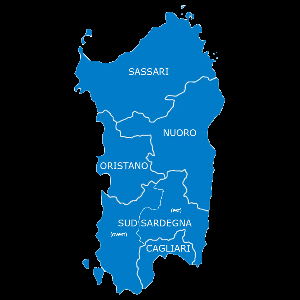Identification and quantification of potential microplastics in shellfish harvested in Sardinia (Italy) by using transillumination stereomicroscopy

Submitted: 14 July 2022
Accepted: 8 November 2022
Published: 5 December 2022
Accepted: 8 November 2022
Abstract Views: 848
PDF: 356
HTML: 27
HTML: 27
Publisher's note
All claims expressed in this article are solely those of the authors and do not necessarily represent those of their affiliated organizations, or those of the publisher, the editors and the reviewers. Any product that may be evaluated in this article or claim that may be made by its manufacturer is not guaranteed or endorsed by the publisher.
All claims expressed in this article are solely those of the authors and do not necessarily represent those of their affiliated organizations, or those of the publisher, the editors and the reviewers. Any product that may be evaluated in this article or claim that may be made by its manufacturer is not guaranteed or endorsed by the publisher.
Similar Articles
- Alice Giusti, Marta Galgani, Filippo Barontini, Emanuela Balocchini, Carlo D’Ascenzi, Andrea Armani, Analysis of the original notifications in the Tuscany region “Rapid Alert System for Food and Feed” in the seven-year period 2015-2021 , Italian Journal of Food Safety: Vol. 13 No. 2 (2024)
- Anna Maria Di Noto, Sonia Sciortino, Cinzia Cardamone, Cosimo Ciravolo, Concetta Napoli, Vincenzina Alio, Pietro Arculeo, Giuseppa Oliveri, Antonella Costa, Detection of Arcobacter spp. in food products collected from Sicilia region: A preliminary study , Italian Journal of Food Safety: Vol. 7 No. 2 (2018)
- Nicoletta Cristiana Quaglia, Flavia Capuozzo, Edmondo Ceci, Stefania Cometa, Angela Di Pinto, Anna Mottola, Roberta Piredda, Angela Dambrosio, Preliminary survey on the occurrence of microplastics in bivalve mollusks marketed in Apulian fish markets , Italian Journal of Food Safety: Vol. 12 No. 2 (2023)
- Sarah Currò, Luca Fasolato, Stefania Balzan, Giacomo Biziato, Francesco Paesanti, Luca Bargelloni, Barbara Cardazzo, Enrico Novelli, Evaluating Escherichia coli contamination in bivalve mollusks using the impedance method: a comparison with most probable number analyses and correlation with environmental parameters , Italian Journal of Food Safety: Vol. 12 No. 2 (2023)
- Cesare Ciccarelli, Angela Marisa Semeraro, Vittoria Di Trani, Guglielmo D’Aurizio, Giuliana Blasi, Melina Leinoudi, Cristina De Simoni, Elena Ciccarelli, Monitoring of bivalve mollusk harvesting areas: the relevance of Salmonella spp. , Italian Journal of Food Safety: Vol. 13 No. 2 (2024)
- Pierluigi Piras, Giannina Chessa, Maurizio Cossu, Gianuario Fiori, Patrizia Piras, Giuseppe Ledda, Lead and other heavy metals (cadmium and mercury) accumulation in bivalve mollusks (Mytilus galloprovincialis, Ruditapes spp. and Crassostrea gigas) sampled in Sardinia in 2008-2012 , Italian Journal of Food Safety: Vol. 2 No. 3 (2013)
- Renis Maçi, Fatmira Shehu, Enton Spaho, Bizena Bijo, Model development and initial characterization of Escherichia coli in the shellfish-producing area of Butrinti Lagoon , Italian Journal of Food Safety: Vol. 13 No. 1 (2024)
- Patrizia Serratore, Fabio Ostanello, Pier Luca Passalacqua, Emanuele Zavatta, Giorgia Bignami, Andrea Serraino, Federica Giacometti, First multi-year retrospective study on Vibrio parahaemolyticus and Vibrio vulnificus prevalence in Ruditapes philippinarum harvested in Sacca di Goro, Italy , Italian Journal of Food Safety: Vol. 5 No. 4 (2016)
- Alfonso Rosamilia, Stefano Benedetti, Delia Cotugno, Chiara Guarnieri, Viviana Miraglia, Andrea Riponi, Stefano Capezzuto, Giulia Siragusa, Nicola Santini, Marco Pierantoni, African swine fever: implications for the Italian pork trade , Italian Journal of Food Safety: Vol. 13 No. 3 (2024)
- Elisabetta Bonerba, Anna Mottola, Antonio Parisi, Angela Di Pinto, Andrea Serraino, Giancarlo Bozzo, Federica Giacometti, Edmondo Ceci, Giuseppina Tantillo, Detection of Arcobacter spp. in Mytilus galloprovincialis samples collected from Apulia region , Italian Journal of Food Safety: Vol. 4 No. 1 (2015)
You may also start an advanced similarity search for this article.

 https://doi.org/10.4081/ijfs.2022.10738
https://doi.org/10.4081/ijfs.2022.10738




